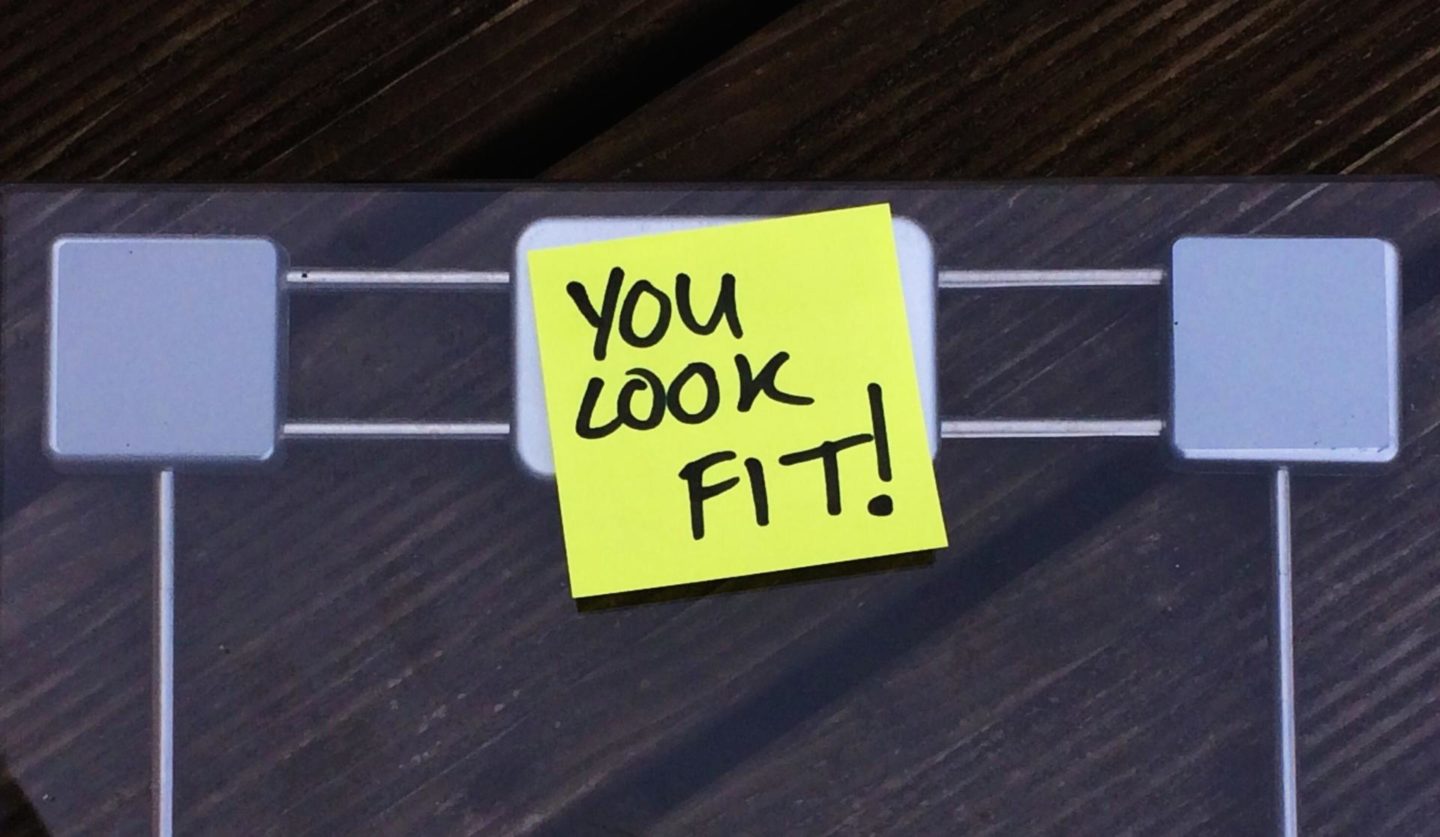
Despite my best efforts, I struggled to find any men willing to talk to me about “bigorexia” – a disorder, also known as muscle dysmorphia, which causes someone to see themselves as “too small”. This could be for a number of reasons: Maybe the stereotype of men not wanting to talk as openly as women about their mental health issues could be to blame. Or, perhaps more scarily, it could be that in some wells on the internet, bigorexia is a compliment, or a goal to aspire to, as you can never be too strong…right?
That’s what the fitness rhetoric might have you believe. Waif figures idealised in the 90s/00s have blossomed into impossible hourglass bodies, all toned and bronzed without a glimpse of fat or cellulite in sight (which tends to happen when you’re plumped up with silicone); and that’s just the women. The body building physique – something once viewed as an occasional theatrical performance to witness what the body was capable of – is now expected to be worn by men daily, leaving truly unattainable standards for most men to live up to. Although it is true that some women, non-binary and trans folk also struggle with a need to look as muscular as is humanly (debatable) possible at the detriment of their mental health, it tends to be mostly a men’s issue.
The reason for my writing of this piece is because new stats were released by NHS Digital a few days ago regarding young people’s mental health, and they found that the number of boys being treated in hospital for eating disorders is at a record high. In the last seven years, the number of boys going into hospitals with eating disorders in England, Scotland and Wales has nearly doubled from 235 in 2010 to 466 in 2018.
Dave Chawner, an author, comedian and eating disorders campaigner, in reaction to the news said: “I think it’s incredible boys are going forward to get treatment. The whole point of removing the discomfort around eating disorders are so that people feel confident enough to seek help.”
To show the true scale of the problem, it’s estimated that nearly 10 million American men will suffer from an eating disorder at some point in their lifetimes, as research estimates that 1.5% of women and 0.5% of men in the United States have bulimia. It seems that gay men are most at risk of getting an eating disorder, with approximately 20% of gay males suffering from anorexia and 14% suffering from bulimia.
Eating disorders are one of the biggest mental health concerns for young people within the UK, and while there are more girls going into hospital than boys, the number of boys getting help is rising much faster. The BBC reported that experts are also noticing a condition called “bigorexia”, that is becoming increasingly common among boys and young men.
Bigorexia, while currently classified as a subtype of obsessive compulsive disorder, arguably should be described as an eating disorder due to the sufferer developing disordered eating, rigid rules of protein consumption, having to eat every specified number of hours and having to eat a specific amount of grams of protein per body weight. The BBC reported in 2015 that approximately one in 10 men training in UK gyms could have bigorexia, which can lead to depression, steroid abuse and even suicide.
At the time of writing, there are currently 2,791 posts under the hashtag #bigorexia on Instagram, and what concerned me upon scrolling was that most used the hashtag in a complimentary sense. I must say, that in my own opinion, this content rivalled the pro-ana accounts I used to religiously worship back in the day when Tumblr was cool. It seems that there is no one taking accountability for the dangers of bigorexia online, and that in fact it is encouraged within a “workout until you’re literally dead” culture, allowing sufferers to fuel their mental illnesses and believe they are lazy, when in fact they need help.
A trait of bigorexia is to constantly compare your own physique with that of others. Another is that men with bigorexia typically worry about the percentage of body fat they carry rather than being overweight. Although body dysmorphia is typically seen as a “women’s issue”, there is evidence to suggest otherwise. Research published in the Journal of Psychology of Men and Masculinity in 2013 reported that approximately 95% of the 153 college age men surveyed were dissatisfied with their bodies on some level. A different 2014 study in the Journal of Body Image, analysed four studies of undergraduate men, and found that over 90% of the men in the studies struggle in some way with body dissatisfaction and negative emotions, thoughts or opinions towards their body.
It might become clear that you could have a problem with bigorexia if, for example, you would rather miss important events, continue training through pain or broken bones or even lose your job rather than interrupt their physical development schedule. Sound familiar? Research undertaken by Pope and others in 2000 found that one man avoided sex with his wife in case it used up energy he could apply to bodybuilding. Men with bigorexia will rarely eat at another person’s house or at a restaurant because they are unable to control the dietary balance or know exactly what has gone into food preparation, and sufferers of the condition have been known to develop eating disorders such as bulimia.
There is also the use of anabolic steroids, which people with bigorexia might continue to use despite experiencing side effects such as increased aggression, acne, breast enlargement, impotence, baldness, impotence and testicular shrinkage. Anabolic steroids are a performance-enhancing drug, often taken illegally by bodybuilders to help with quick “gains”, but they can also lead to potentially fatal side effects such as kidney impairment or failure, damage to the liver, and cardiovascular problems including enlargement of the heart, high blood pressure, and changes in blood cholesterol leading to an increased risk of stroke and heart attack.
Since I couldn’t find anyone to talk to directly about bigorexia – and I am focusing on this disorder for a change, as we have covered anorexia, bulimia and other EDs a LOT throughout this website – I did a little research and stumbled upon the internet gem, Bigorexiablog. Although nothing has been posted since 2016, it provided a safe space for men with bigorexia to understand more about their illness and talk openly (or anonymously) about their own stories.
Here’s one anonymous’s account with bigorexia:
There is no black and white symptoms, no process chart that points to the conclusion of ‘hey you have muscle dysmorphia!’…like a swimming pool shallow end, this condition, or mental aliment, creeps up on you over a course of years before the water laps over your head and nearly drowns you.
Bigorexia…anorexia…it’s the same self loathing.
The reflection in the mirror is just as offensive as the comments from loved ones that say to the contrary. What do they know? They don’t know me? You think of what you can do change the issue…drastic times leads to drastic measures.
I feel comfortable surrounded by people with the same condition, which has happened to most of my weight lifting friends, those who surround me when I work on supplement stands at expos selling the ‘lifestyle’. We are all the fake apples on show room kitchen tables. Glossy and shining on the outside, hollow and dead on the inside selling an image we are part of yet we know its nothing but false and empty. Misery loves company.”
Now I don’t know about you, but I found that rather haunting to read, and a beaming example of why men’s body issues and eating disorders need just as much coverage as women’s.
On the rare occasion that bigorexia is properly diagnosed and the individual is willing to seek help, it’s often addressed with cognitive behavioural therapy, antidepressants, and anxiety medications. There is a stigma that men don’t want to seek help for their mental health, but the latest NHS stats may spell a turn in the tide. Unfortunately, there is still a lot of work to be done in this area. Many people with bigorexia do not seek help because they are worried that people will judge them or think they are vain, which means that they are likely to experience it for a long time before seeking support. There are also very few medical studies focusing on bigorexia (or muscle dysmorphia).
When speaking to Dave Chawner, he did make a valid point which I’d like to conclude with: “I do worry about the over-genderisation of the debate – if someone is ill, they’re ill, regardless of man, woman or other.” While I do agree with Dave on this, the fact that no one replied to my pleas for a man to come forward to talk to me about their struggles with bigorexia, or that today 95% of our Instagram following is female, I am concerned that men don’t feel like they have a place to go with regards to talking openly about their battles with eating disorders, as one of the only blogs I found about bigorexia, for example, ceased publication two years ago. The latest stats also reveal a growing current of young boys developing eating disorders in a world that believes you should “shut up and man up”.
I have brothers, and one day I might have sons, and I don’t want this to be their future. It’s important for everyone to feel included in the campaign for better eating disorder and mental health care, rather than to only be spoken to to be used as a fleeting case study in a news story.
If you are struggling with an eating disorder, contact Beat. If you are struggling with bigorexia, contact Mind.



